Sacre-Coeur
Tags : Sightseeing
Timings : 6 AM - 10.30 PM
Time Required : 2 hours
Entry Fee : Entry is free;
Access to the Dome (Cash only):
EUR 8 for Adults
EUR 5 for Children
Basilica of the Sacred Heart
Sacré-Cœur, Paris Overview
Sacre-Coeur is a Roman Catholic church and a basilica, situated on the Montmartre hill in Paris, France. It is dedicated to the Sacred Heart of Jesus, which represents the love of Jesus Christ. The basilica is the second highest point of the city, next to the Eiffel Tower.
There is also an observation deck that is located at the topmost points of the central dome. These observation points will deliver to you captivating views of the shimmering golden city of Paris bedecked in its monumental finesse. Construction of the basilica began in 1875 and concluded in 1914, but consecration ceremonies took place only after the end of World War I, in 1919. It emerges as an extremely popular destination for locals as well as tourists alike as it is a religious monument. The Sacré-Cœur is a symbol of both cultural and political stance, and hence, is considered to be a double monument. Visitors have the choice of indulging in a handful of activities and events that take place at the basilica, which include night adorations and prayers. The basilica represents a Romano-Byzantine style of architecture, an uncommon and new form at that time, which gathered the basilica a lot of attention from the people of France. It has been a symbol of bravery, protection and revolution post-Franco-Prussian War of 1870.
Read More on Sacr�-C?ur
History of Sacré-Cœur
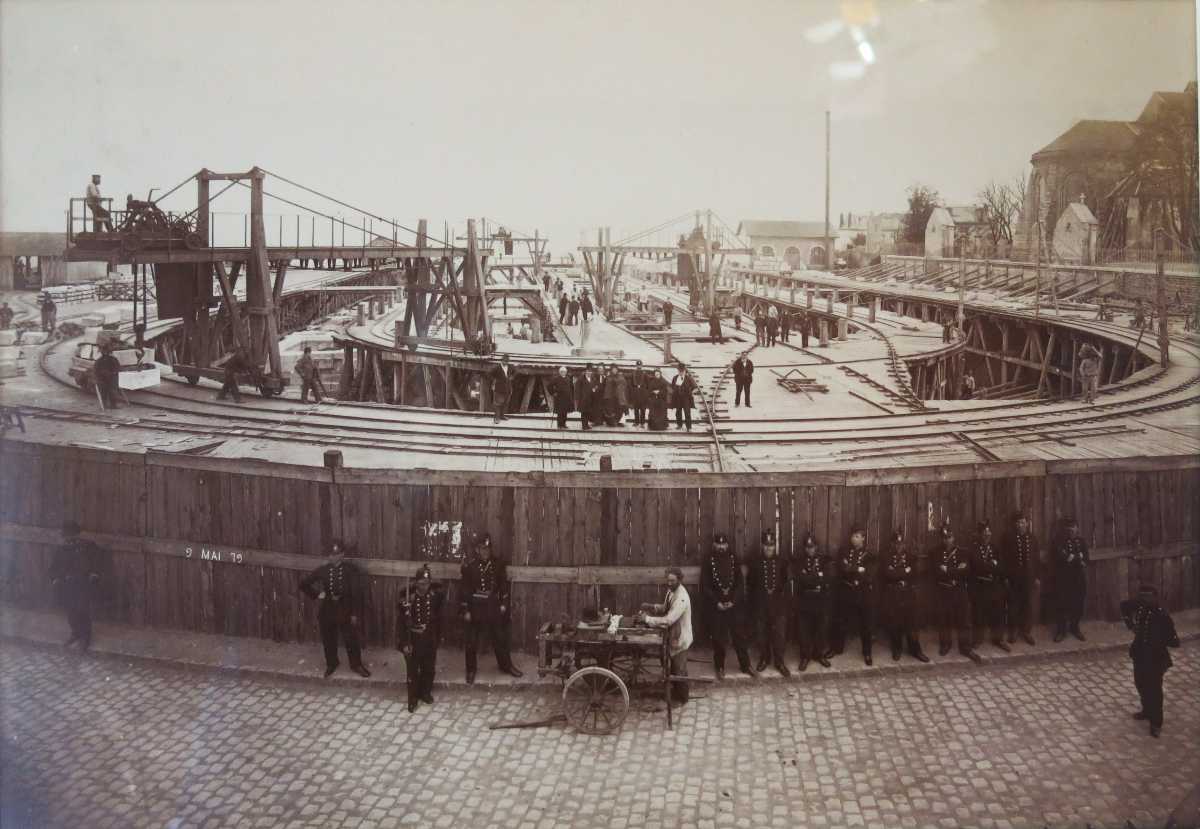
The history of this place dates back to times earlier than the construction of the Sacré-Cœur. During the Franco-Prussian War, in 1870, the defeat of French Troops led to immense pain and humiliation within the hearts of the French people. Hence, the basilica was built in honour of the 58000 lives lost during the war; in order to restore faith, and hope of emerging from these great perils. The purpose of the church was not only protection but to seek forgiveness for all the sins committed since the French Revolution.
In 1873, the archbishop of Paris requested the decree of the Assemblee Nationale 24 July 1873 and specified that the basilica is built to expiate the crimes of the Commune. Many acts of indiscretion were performed under the rule of the Commune, and communards had also martyred Georges Darboy, Archbishop of Paris. After numerous discussions and planning, particularly regarding what the basilica would represent, there was a voting session which ruled in favour of the construction of this church, and subsequently, the entire process was declared a matter of public utility.
Architecture of Sacré-Cœur
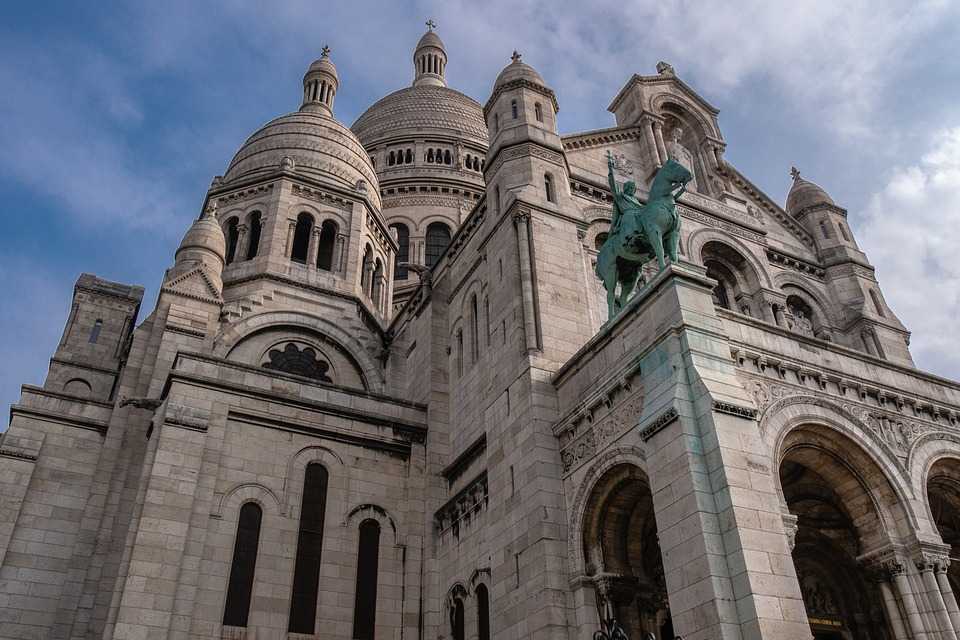
Romano-Byzantine features highlight the structure; an unusual style of architecture at the time adopted to counter the baroque architecture of Palais Garnier. Nationalist themes dominate many design elements of the basilica. The patio has three arches and is embellished with two equestrian statues of French national saints Joan of Arc and King Saint Louis IX. The basilica also houses one of the largest and heaviest bells in the world, the 19-ton Savoyarde, which symbolizes the annexation of Savoy in 1860.
The Sacré-Cœur was built using travertine stone, a form of limestone, and is also known to have self-cleaning properties, which factors into the cleanliness of the monument. In the apse is a mosaic, painted by Luc-Olivier Merson, which is among the largest mosaics and artworks in the world. The basilica is accompanied by a garden that is primarily used for meditation and relaxation, along with a fountain.
The observation area at the topmost part of the dome offers breathtaking views of the city of Paris. The Sacré-Cœur also houses a humongous pipe organ spread across three divisions. This pipe organ was a glimpse into the future at the time, due to its advanced and highly sophisticated structure which gave the performer a natural advantage over other instruments.
Things to View in Sacre-Coeur
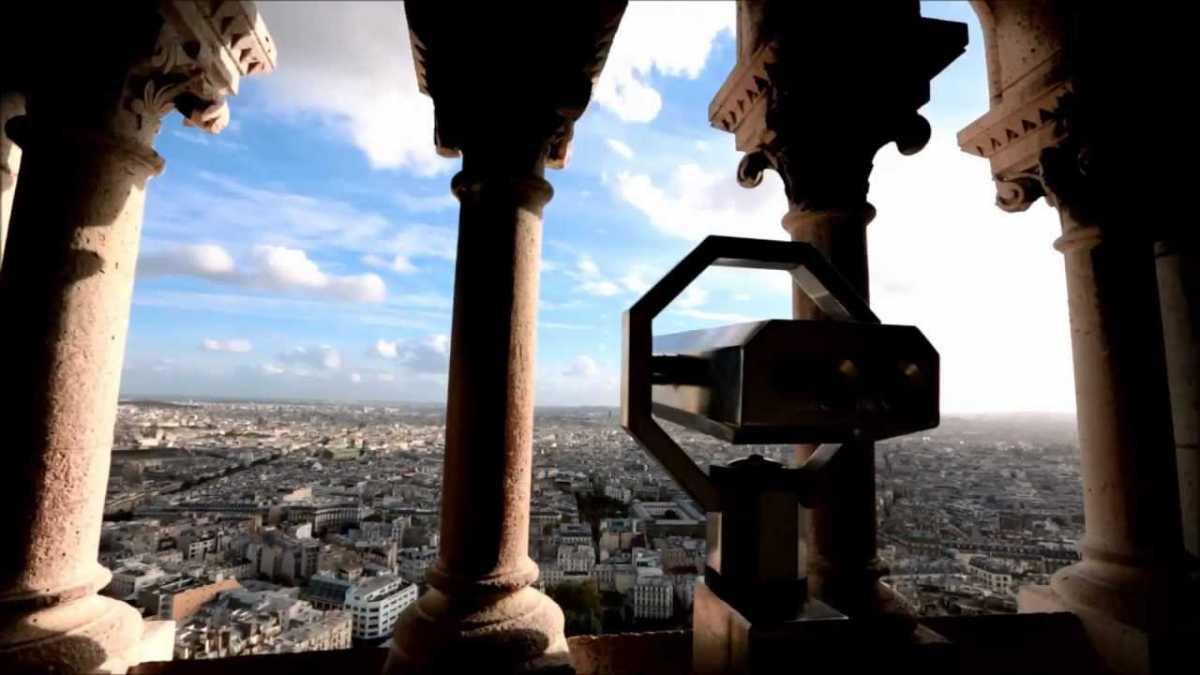
The dome offers a panoramic view of the city via the observation points situated at the topmost part of the dome. Visitors may go there if they want to experience the true feeling of being in Paris. The Eiffel Tower, Notre-Dame cathedral and most of the other Parisian monuments can be seen in their true glory, from these viewpoints. A well-lit atmosphere with a lively crowd perfectly describes this area of the basilica.
The dome is free to visitors but photography is not permitted inside the Basilica premises out of respect for the holy prayers that go on inside.
2. The Grand Organ
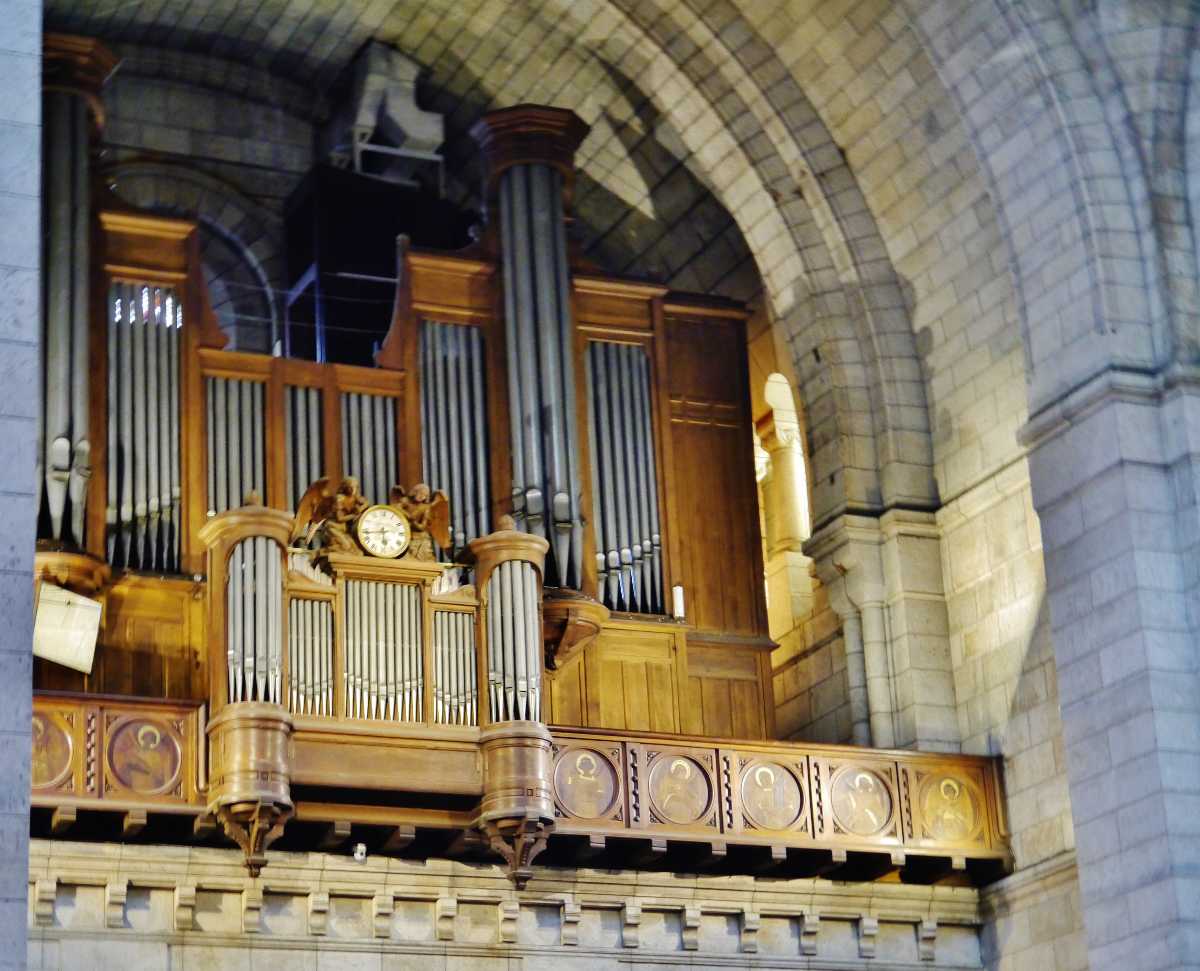
The prized possession of the basilica is a humongous pipe organ which stands at the center of it. It was built in 1898 and was the last great instrument built by its maker Aristide Cavalle-Coll. The Basilica acquired it in 1919. The organ is composed of four keyboards, one pedalboard and 78 stops. Unfortunately, due to the constant state of decay that the pipe organ is in, it needs to be played regularly in order to make it last longer, which makes it the second-most heard organ in the world. A restoration and renovation schedule has been planned, which needs donations. People can hear the organ playing six days a week.
3. The Apse Mosaic
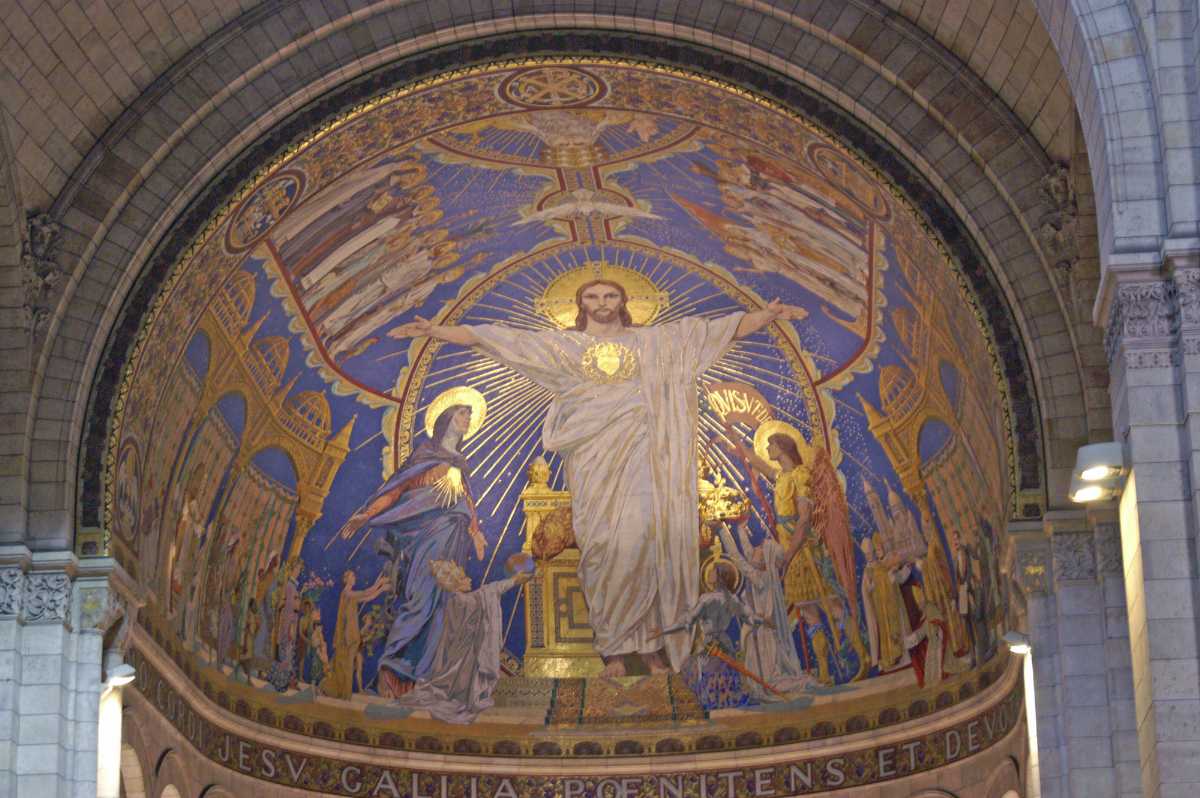
Not a single church can be called complete without the presence of a significantly large mosaic in it. The Sacre-Coeur also has a large 475 square meters long mosaic of Jesus Christ, called ‘Christ in Glory’, created by Olivier Merson, H.M. Magne and R. Martin. It secures a place among the largest mosaics in the world. The mosaic represents Jesus Christ in a white robe with a golden heart, surrounded by a world of adorers, among whom are Virgin Mary, Saint Joan of Arc and Saint Michael. At the bottom of the mosaic is an inscription which states that it was a gift from France to the Sacred Heart of Jesus.
4. Prayers
Prayers and adorations are performed throughout the year, especially on festivities such as Christmas and Thanksgiving. There are a handful of major prayers which take place periodically across the year, such as the Christmas prayer, Thanksgiving prayer, the Litany of the Sacred Heart and the Sanctuary’s Prayer. Since the monument is a place where silence is of utmost respect, chorals and prayers are performed publicly instead of classical concerts and shows.
Sacre-Coeur is also famous for its daily Night Adoration event that is only open for people who have registered for it. Registered people can opt to stay the night at the Basilica Guest House, which is convenient because the vocation takes place after the gate closes at 10.30 PM. People who don’t want to stay can attend the much earlier adoration which starts in the evening.
Marché de Noël du Sacré-Coeur - Christmas Festival
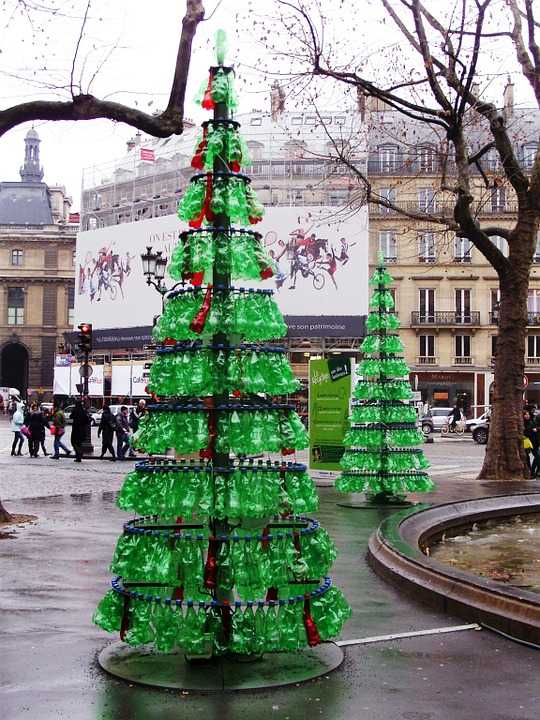
Every year, during December (Dec 12 to 24), the Sacre-Coeur hosts a Christmas Village which is a fun and typical Christmas market where people come to drink, eat, shop and have fun, absorbing the spirit of Christmas, along with fascinating French Crafts, gastronomy from various regions, and free decoration workshops for kids. In terms of food, people get to enjoy specialities from the various areas in France: Honey from Paris, foie gras from Auvergne, pretzels from Alsace, tapenade from Provence, cheese from Pyrénées, dry fruits, cookies, teas and roasted chestnuts. Without forgetting the famous homemade mulled wine with spices recipe.
Shops in Sacré-Cœur
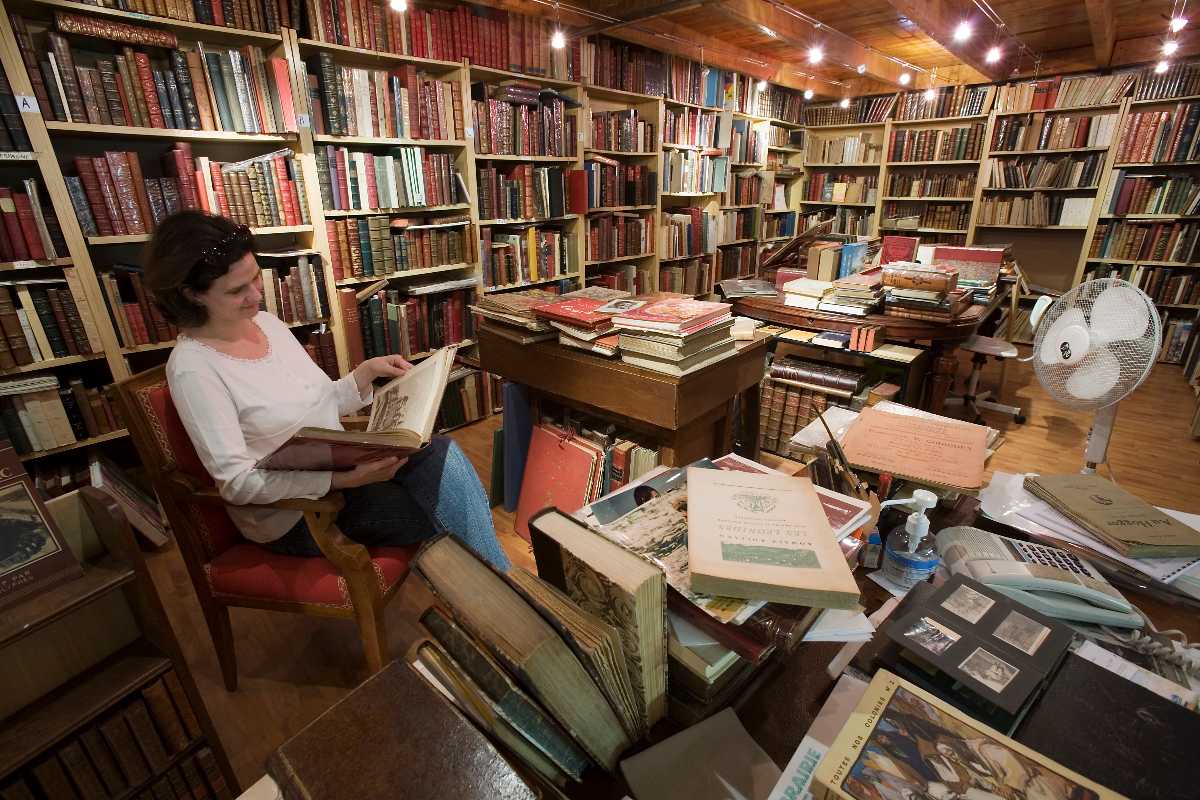
The Basilica Shop offers a range of religious items and souvenirs, which can be used for personal purposes as well as gifts. Items include crucifixes, icons, engravings, medals, rosary beads, cards, Christmas cribs and a lot of other items. It also has guides and leaflets that might help you with your visit of the Sacre-Coeur.
On the other hand is a bookshop where you will find a variety of books, more dominantly religious ones. The bookshop has an extensive selection of bibles, catechisms, texts of the Magisterium, works of theology, spiritual books, lives of the saints and religious books for children.
